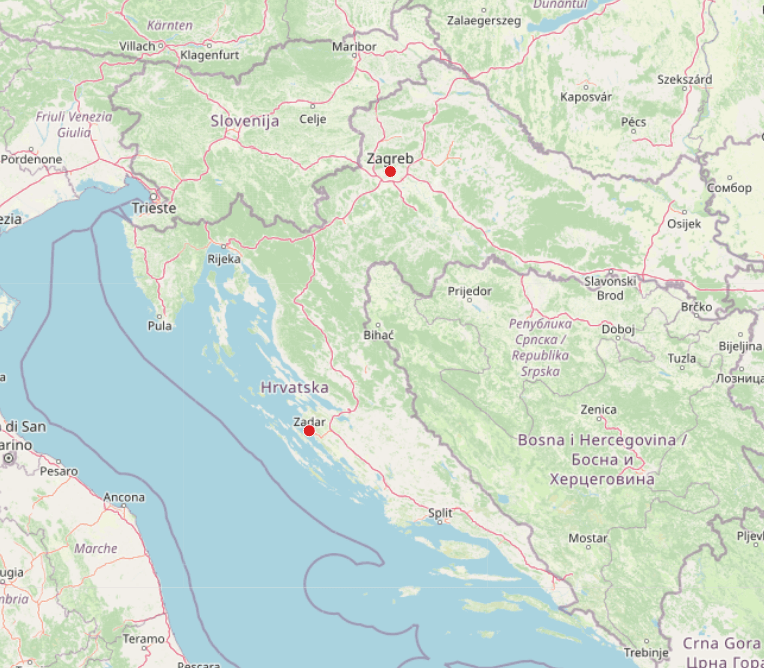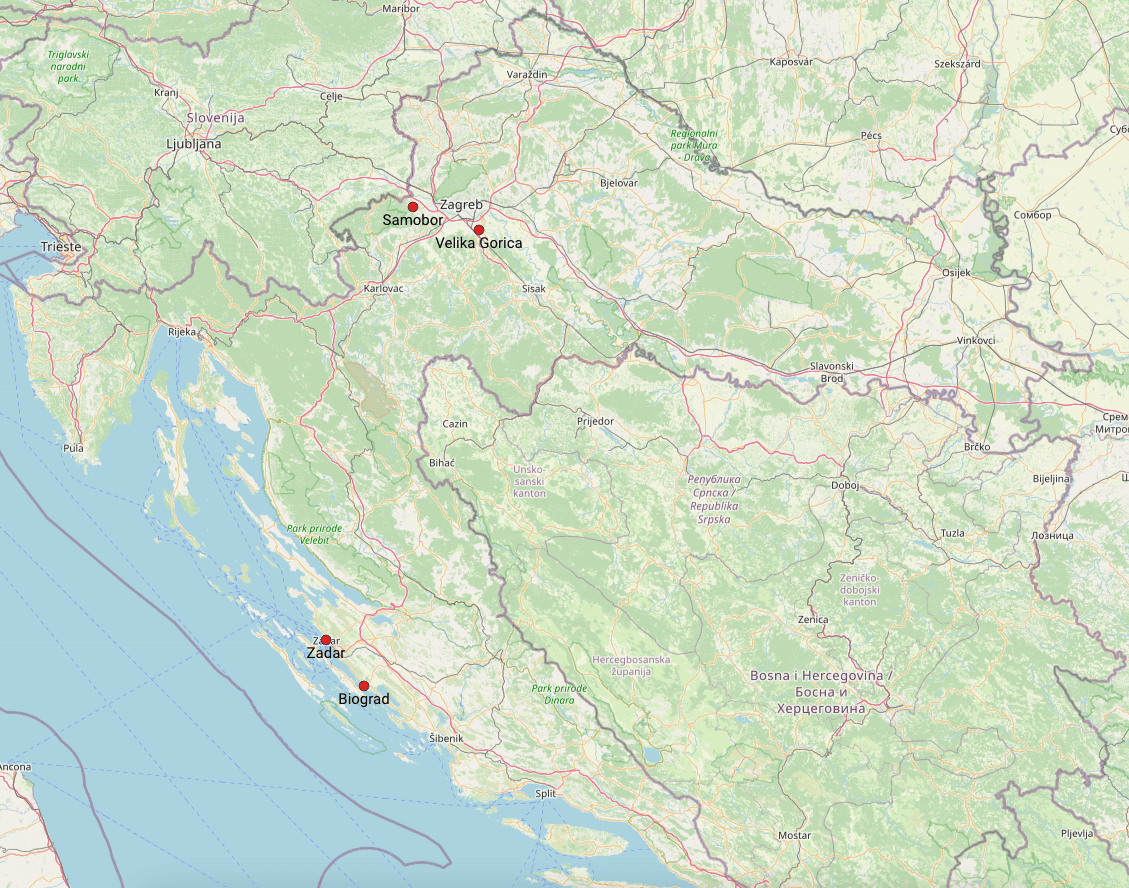distance_calculator
The distance calculator is a module for calculating distance between two geographic locations. It measures the distance along the surface of the earth. Formula takes into consideration the radius of the earth. For this algorithm, it is necessary to define an object that has longitude and latitude properties like this:
(location:Location {lat: 44.1194, lng: 15.2314})| Trait | Value |
|---|---|
| Module type | module |
| Implementation | C++ |
| Graph direction | undirected |
| Edge weights | unweighted |
| Parallelism | sequential |
Procedures
You can execute this algorithm on graph projections, subgraphs or portions of the graph.
single()
Measures a distance from the start node to the end node.
Input:
subgraph: Graph(OPTIONAL) ➡ A specific subgraph, which is an object of type Graph returned by theproject()function, on which the algorithm is run. If subgraph is not specified, the algorithm is computed on the entire graph by default.
start: Vertex➡ Starting point to measure distance. Required to havelngandlatproperties.end: Vertex➡ Ending point to measure distance. Required to havelngandlatproperties.metrics: string➡ Can be either “m” or “km”. These stand for meters and kilometers respectively.decimals:int➡ Number of decimals to round up the result.
Output:
distance: double➡ The final result obtained by calculating distance (in ‘m’ or ‘km’) between the 2 points that each have its latitude and longitude properties.
Usage:
The following query measures a distance from the start node to the end node:
MATCH (n:Location), (m:Location)
CALL distance_calculator.single(m, n, 'km')
YIELD distance
RETURN distance;multiple()
The procedure calculates the distance from all nodes from a start list, to all the nodes from an end list.
Input:
subgraph: Graph(OPTIONAL) ➡ A specific subgraph, which is an object of type Graph returned by theproject()function, on which the algorithm is run. If subgraph is not specified, the algorithm is computed on the entire graph by default.
start_points: List[Vertex]➡ Starting points to measure distance collected in a list. Required to havelngandlatproperties. Must be of the same size asend_points.end_points: List[Vertex]➡ Ending points to measure distance collected in a list. Required to havelngandlatproperties. Must be of the same size asstart_points.metrics: string➡ Can be either “m” or “km”. These stand for metres and kilometres respectively.decimals:int➡ Number of decimals to round up the result.
Output:
distance: List[double]➡ The final result obtained by calculating distance (in ‘m’ or ‘km’) from all the nodes from the start list, to all the nodes from the end list.
Usage:
MATCH (n), (m)
WITH COLLECT(n) AS location_set1, COLLECT(m) AS location_set2
CALL distance_calculator.multiple(location_set1, location_set2, 'km') YIELD distances
RETURN distances;Examples
Calculate distance between Zagreb and Zadar.
Database state
The database contains the following data:

Created with the following Cypher queries:
CREATE (location:Location {name: 'Zagreb', lat: 45.8150, lng: 15.9819});
CREATE (location:Location {name: 'Zadar', lat: 44.1194, lng: 15.2314});Calculate distance
MATCH (n {name: 'Zagreb'}), (m {name: 'Zadar'})
CALL distance_calculator.single(n, m, 'km') YIELD distance
RETURN distance;Result:
+----------+
| distance |
+----------+
| 197.568 |
+----------+Calculate distance between:
- Samobor and Zadar,
- Velika Gorica and Zadar,
- Samobor and Biograd,
- Velika Gorica and Biograd.
Samobor and Velika Gorica are in Zagrebacka county. Zadar and Biograd are in Zadar county.
Database state
The database contains the following data:

Created with the following Cypher queries:
CREATE (location:Location {name: 'Samobor', county: 'Zagrebacka', lat: 45.8011, lng: 15.7110});
CREATE (location:Location {name: 'Velika Gorica', county: 'Zagrebacka', lat: 45.7142, lng: 16.0752});
CREATE (location:Location {name: 'Zadar', county:'Zadar', lat: 44.1194, lng: 15.2314});
CREATE (location:Location {name: 'Biograd', county:'Zadar', lat: 43.9373, lng: 15.4436});Calculate distance
Get the values using the following query:
MATCH (n:Location {county: "Zagrebacka"})
MATCH (m:Location {county: "Zadar"})
WITH COLLECT(n) as ZG, COLLECT(m) as ZD
CALL distance_calculator.multiple(ZG, ZD, "km", 2) YIELD distances
RETURN ZG, ZD, distances;Results (the information about nodes in the lists have been shortened to include only city names):
+----------------+------------+-----------+
| ZG | ZD | distances |
+----------------+------------+-----------+
| Samobor | Zadar | 190.76 |
+----------------+------------+-----------+
| Velika Gorica | Zadar | 189.37 |
+----------------+------------+-----------+
| Samobor | Biograd | 208.31 |
+----------------+------------+-----------+
| Velika Gorica | Biograd | 203.76 |
+----------------+------------+-----------+